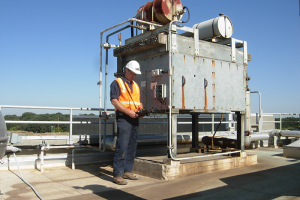Sustainable practices in environmental services
Sustainability is a word that is finding its way more often into the vernacular of environmental services teams. Health care produces a significant environmental footprint. According to Practice Greenhealth, “health care generates more than 5.9 million tons of waste each year, contributes 8 percent of the total greenhouse gas emissions in the United States and spends $8 billion annually on energy alone.”
Although sustainability is gaining a foothold in environmental services, there are challenges in implementing it. Hospital leaders don’t want to harm the ecosystem, but have to balance the benefits of sustainable products and processes against rising costs and decreased revenues. However, there are several initiatives that you can implement not only to reduce costs, but also to provide sustainability.
Waste companies have developed processes that allow hospitals to safely recycle the plastics from sharps collection systems. Another program available to hospitals is to recycle used, clean blue sterilization wrap from surgical packs, transforming the polypropylene fabric into other products.
As much as green cleaning products and procedures are preferred, there are locations in a health care facility where green cleaning products would not be appropriate. To identify these locations, it is helpful to divide the hospital into three categories:
• Critical and high risk. Emergency rooms and surgical areas fall into this category, and require Environmental Protection Agency (EPA)-approved, hospital-grade disinfectants specified by the Centers for Disease Control and Prevention (CDC) and regulatory agencies.
• Semicritical areas. Public clinics, rehabilitation areas and nurseries are included in this category. Disinfectants must be EPA-approved and hospital-grade. However, floors typically do not require the use of disinfectants and can be cleaned using a green cleaning product instead (follow CDC recommendations where blood and body fluid, or certain infection concerns may be present). Ammonia-free glass cleaner and non-acid toilet bowl cleaners are good examples of environmentally preferred products to use in these areas.
• Noncritical areas. The administrative and office sections can be categorized as noncritical cleaning locations. In these areas, environmentally preferable cleaning products can be used unless the hospital specifically requests otherwise.
Protecting patients, visitors and staff in our hospitals is the key goal of environmental services. Working with the sustainability team in your hospital to help drive effective green practices will help you reach that goal.
Rock Jensen is a senior consultant at Soriant Healthcare, Milton, Ga.
Valuable resources available from AHE
AHE represents, defines and advances the professionals responsible for care of the health care environment to ensure high-quality outcomes and healthy communities. The following resources can be found at www.ahe.org/ahe/learn/tools_and_resources/publications.shtml.
• Recommended Practice Series: Environmental Services Equipment and Supplies. The equipment and supplies covered in this booklet are essential, discrete components of safe, efficient and productive environmental services operations.
• Practice Guidance for Healthcare Environmental Cleaning, second edition. This manual provides evidence-based research, guidance and recommended practices that should be considered for inclusion in health care environmental services departments. Because each health care facility has its own needs, this resource has been designed to enhance an existing program.
Environmental Sustainability Certificate Program
AHE has launched a new certificate program to acknowledge the ongoing and outstanding environmental and ecological sustainability efforts of environmental services departments. For more on the Environmental Sustainability Certificate Program, go to
www.ahe.org/ahe/lead/environmental_sustainability_certificate_program.shtml.




